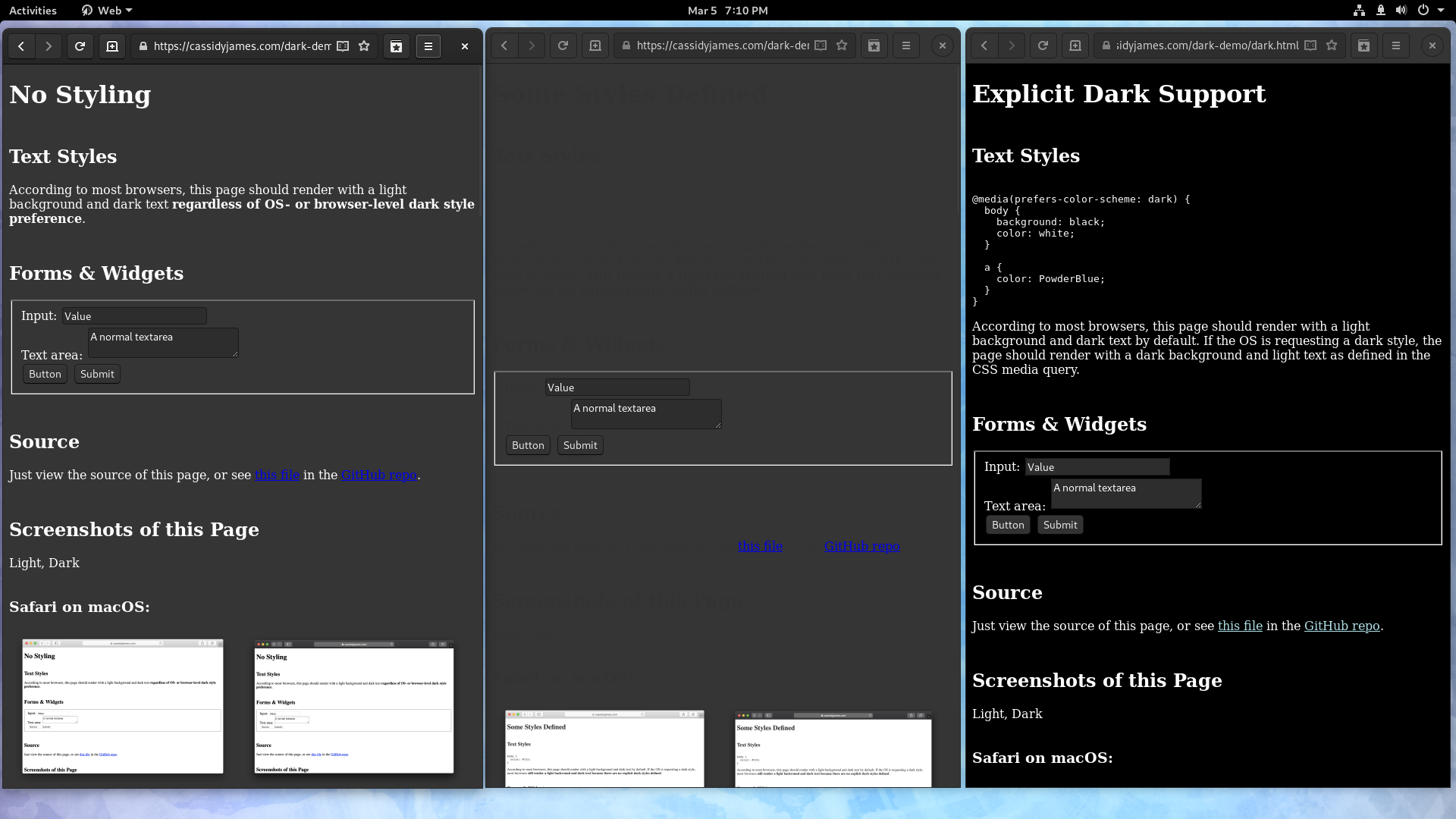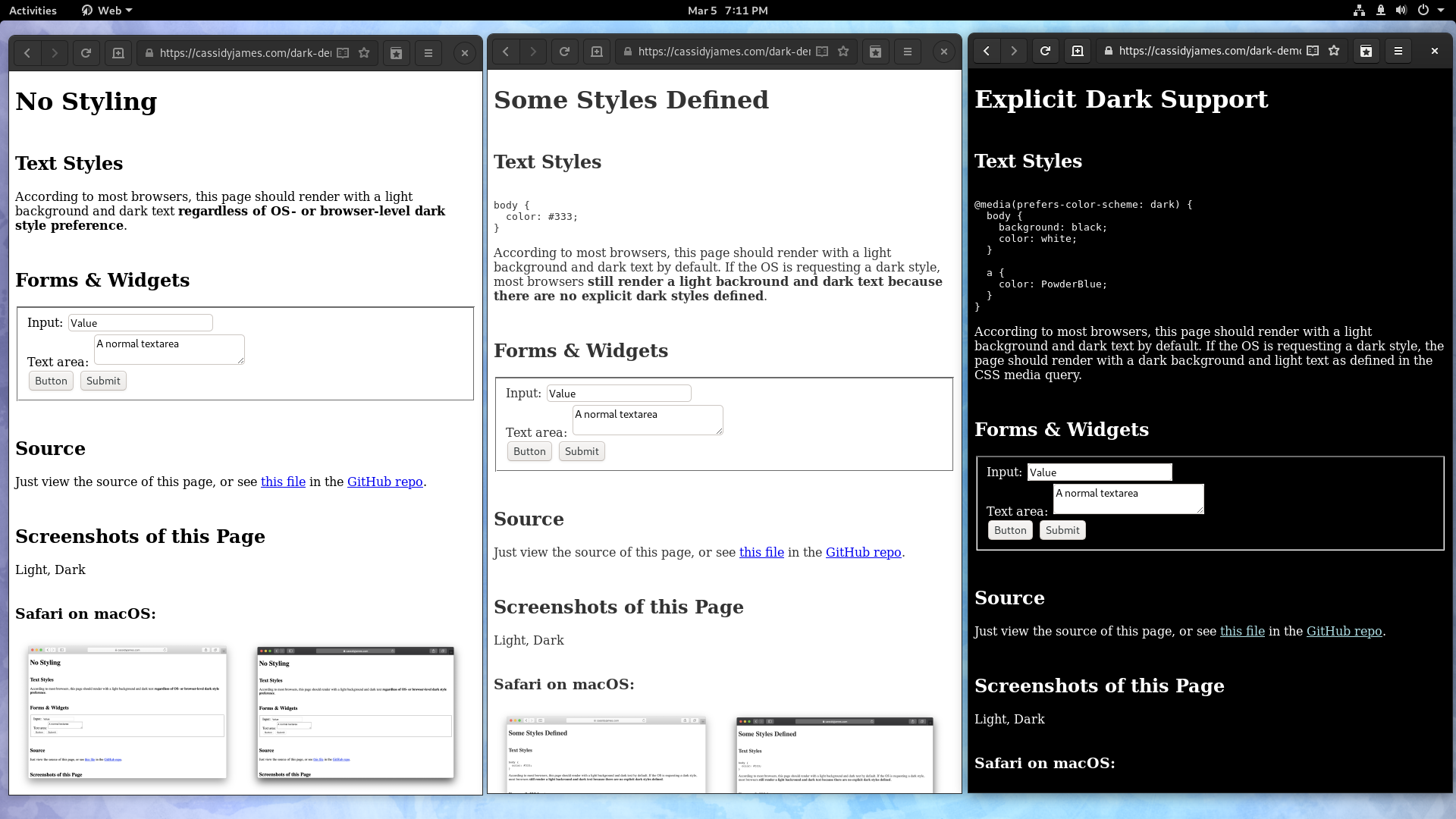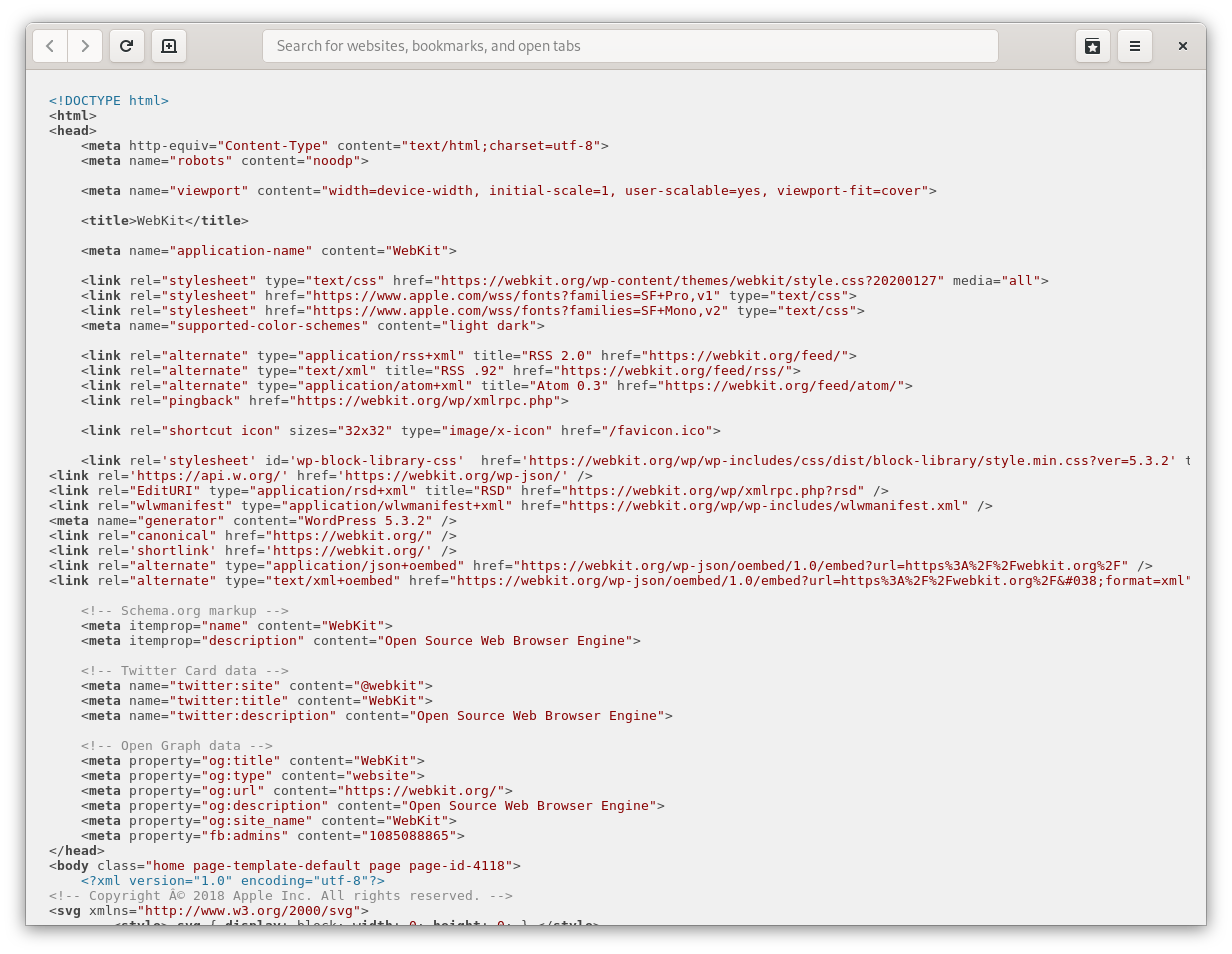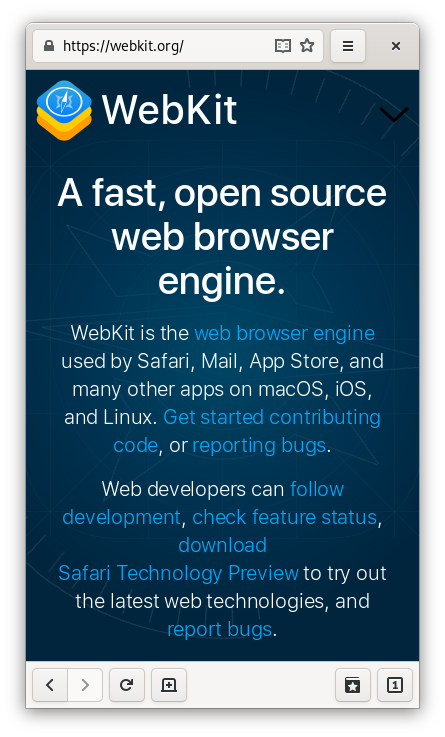So, what’s new in Epiphany 3.36?
PDF.js
Once upon a time, beginning with GNOME 3.14, Epiphany had supported displaying PDF documents via the Evince NPAPI browser plugin developed by Carlos Garcia Campos. Unfortunately, because NPAPI plugins have to use X11-specific APIs to draw web content, this didn’t suffice for very long. When GNOME switched to Wayland by default in GNOME 3.24 (yes, that was three years ago!), this functionality was left behind. Using an NPAPI plugin also meant the code was inherently unsandboxable and tied to a deprecated technology. Epiphany disabled support for NPAPI plugins by default in Epiphany 3.30, hiding the functionality behind a hidden setting, which has now finally been removed for Epiphany 3.36, killing off NPAPI for good.
Jan-Michael Brummer, who comaintains Epiphany with me, tried bringing back PDF support for Epiphany 3.34 using libevince, but eventually we decided to give up on this approach due to difficulty solving some user experience issues. Also, the rendering occurred in the unsandboxed UI process, which was again not good for security.
But PDF support is now back in Epiphany 3.36, and much better than before! Thanks to Jan-Michael, Epiphany now supports displaying PDFs using the amazing PDF.js. We are thankful for Mozilla’s work in developing PDF.js and open sourcing it for us to use. Viewing PDFs in Epiphany using PDF.js is more convenient than downloading them and opening them in Evince, and because the PDF is rendered in the sandboxed web process, using web technologies rather than poppler, it’s also approximately one bazillion times more secure.

One limitation of PDF.js is that it does not support forms. If you need to fill out PDF forms, you’ll need to download the PDF and open it in Evince, just as you would if using Firefox.
Dark Mode
Thanks to Carlos Garcia, it should finally be possible to use Epiphany with dark GTK themes. WebKitGTK has historically rendered HTML elements using the GTK theme, which has not been good for users of dark themes, which broke badly on many websites, usually due to dark text being drawn on dark backgrounds or various other problems with unexpected dark widgets. Since WebKitGTK 2.28, WebKit will try to manually change to a light GTK theme when it thinks a dark theme is in use, then use the light theme to render web content. (This work has actually been backported to WebKitGTK 2.26.4, so you don’t need to upgrade to WebKitGTK 2.28 to benefit, but the work landed very recently and we haven’t blogged about it yet.) Thanks to Cassidy James from elementary for providing example pages for testing dark mode behavior.


Since Carlos had already added support for the prefers-color-scheme media query last year, this now gets us up to dark mode parity with most browsers, except, notably, Safari. Unlike other browsers, Safari allows websites to opt-in to rendering dark system widgets, like WebKitGTK used to do before these changes. Whether to support this in WebKitGTK remains to-be-determined.
Process Swap on Navigation (PSON)
PSON, which debuted in Safari 13, is a major change in WebKit’s process model. PSON is the first component of site isolation, which Chrome has supported for some time, and which Firefox is currently working towards. If you care about web security, you should care a lot about site isolation, because the web browser community has arrived at a consensus that this is the best way to mitigate speculative execution attacks.
Nowadays, all modern web browsers use separate, sandboxed helper processes to render web content, ensuring that the main user interface process, which is unsandboxed, does not touch untrusted web content. Prior to 3.36, Epiphany already used a separate web process to display each browser tab (except for “related views,” where one tab opens another and gains scripting ability over the opened tab, subject to the Same Origin Policy). But in Epiphany 3.36, we now also have a separate web process per website. Each tab will swap between different web processes when navigating between different websites, to prevent any one web process from loading content from different websites.
To make these process swap navigations fast, a pool of prewarmed processes is used to hide the startup cost of launching a new process by ensuring the new process exists before it’s needed; otherwise, the overhead of launching a new web process to perform the navigation would become noticeable. And suspended processes live on after they’re no longer in use because they may be needed for back/forward navigations, which use WebKit’s page cache when possible. (In the page cache, pages are kept in memory indefinitely, to make back/forward navigations fast.)
Due to internal refactoring, PSON previously necessitated some API breakage in WebKitGTK 2.26 that affected Evolution and Geary: WebKitGTK 2.26 deprecated WebKit’s single web process model and required that all applications use one web process per web view, which Evolution and Geary were not, at the time, prepared to handle. We tried hard to avoid this, because we hate to make behavioral changes that break applications, but in this case we decided it was unavoidable. That was the status quo in 2.26, without PSON, which we disabled just before releasing 2.26 in order to limit application breakage to just Evolution and Geary. Now, in WebKitGTK 2.28, PSON is finally available for applications to use on an opt-in basis. (It will become mandatory in the future, for GTK 4 applications.) Epiphany 3.36 opts in. To make this work, Carlos Garcia designed new WebKitGTK APIs for cross-process communication, and used them to replace the private D-Bus server that Epiphany previously used for this purpose.
WebKit still has a long way to go to fully implement site isolation, but PSON is a major step down that road. Thanks to Brady Eidson and Chris Dumez from Apple for making this work, and to Carlos Garcia for handling most of the breakage (there was a lot). As with any major intrusive change of such magnitude, regressions are inevitable, so don’t hesitate to report issues on WebKit Bugzilla.
highlight.js
Once upon a time, WebKit had its own implementation for viewing page source, but this was removed from WebKit way back in 2014, in WebKitGTK 2.6. Ever since, Epiphany would open your default text editor, usually gedit, to display page source. Suffice to say that this was not a very satisfactory solution.
I finally managed to implement view source mode at the Epiphany level for Epiphany 3.30, but I had trouble making syntax highlighting work. I tried using various open source syntax highlighting libraries, but most are designed to highlight small amounts of code, not large web pages. The libraries I tried were not fast enough, so I gave up on syntax highlighting at the time.
Thanks to Jan-Michael, Epiphany 3.36 supports syntax highlighting using highlight.js, so we finally have view source mode working fully properly once again. It works much better than my failed attempts with different JS libraries. Please thank the highlight.js developers for maintaining this library, and for making it open source.

Service Workers
Service workers are now available in WebKitGTK 2.28. Our friends at Apple had already implemented service worker support a couple years ago for Safari 11, but we were pretty slow in bringing this functionality to Linux. Finally, WebKitGTK should now be up to par with Safari in this regard.
Cookies!
Patrick Griffis has updated libsoup and WebKitGTK to support SameSite cookies. He’s also tightened up our cookie policy by implementing strict secure cookies, which prevents http:// pages from setting secure cookies (as they could overwrite secure cookies set by https:// pages).
Adaptive Design
As usual, there are more adaptive design improvements throughout the browser, to provide a better user experience on the Librem 5. There’s still more work to be done here, but Epiphany continues to provide the best user experience of any Linux browser at small screen sizes. Thanks to Adrien Plazas and Jan-Michael for their continued work on this.

elementary OS
With help from Alexander Mikhaylenko, we’ve also upstreamed many elementary OS design changes, which will be used when running under the Pantheon desktop (and not impact users on other desktops), so that the elementary developers don’t need to maintain their customizations as separate patches anymore. This will eliminate a few elementary-specific bugs, including some keyboard shortcuts that were previously broken only in elementary, and some odd tab bar behavior. Although Epiphany still doesn’t feel quite as native as an app designed just for elementary OS, it’s getting closer.
Epiphany 3.34
I failed to blog about Epiphany 3.34 when I released it last September. Hopefully you have updated to 3.34 already, and are already enjoying the two big features from this release: the new adblocker, and the bubblewrap sandbox.
The new adblocker is based on WebKit Content Blockers, which was developed by Apple several years ago. Adrian Perez developed new WebKitGTK API to expose this functionality, changed Epiphany to use it, and deleted Epiphany’s older resource-hungry adblocker that was originally copied from Midori. Previously, Epiphany kept a large GHashMap of compiled regexes in every web process, consuming a very significant amount of RAM for each process. It also took time to compile these regexes when launching each new web process. Now, the adblock filters are instead compiled into an efficient bytecode format that gets mmapped between all web processes to avoid excessive resource use. The bytecode is interpreted by WebKit itself, rather than by Epiphany’s web process extension (which Epiphany uses to execute custom code in WebKit’s web process), for greatly improved performance.
Lastly, Epiphany 3.34 enabled Patrick’s bubblewrap sandbox, which was added in WebKitGTK 2.26. Bubblewrap is an amazing sandboxing tool, already used effectively by flatpak and rpm-ostree, and I’m very pleased with Patrick’s decision to use it for WebKit as well. Because enabling the sandbox can break applications, it is currently opt-in for GTK 3 apps (but will become mandatory for GTK 4 apps). If your application uses WebKitGTK, you really need to take some time to enable this sandbox using webkit_web_context_set_sandbox_enabled(). The sandbox has introduced a couple regressions that we didn’t notice until too late; notably, printing no longer works, which, half a year later, we still haven’t managed to fix yet. (I’ll try to get to it soon.)
OK, this concludes your 3.36 and 3.34 updates. Onward to 3.38!
Comments
6 responses to “Epiphany 3.36 and WebKitGTK 2.28”
>PSON is finally available for applications to use on an opt-in basis
How ?
WebKitWebContext gained a process-swap-on-cross-site-navigation-enabled property. Example usage.
Ok, set in Eolie. Thanks for help !
Thanks for touching upon the subject of the adblocker, very interesting. One of the longstanding questions I’ve had on my mind has been “How does Epiphany’s adblocker performance compare to the infamous uBlock?”
I believe it would be a VERY interesting stand-alone blog post to write, if you could somehow benchmark and compare the Epiphany with Firefox’s (or Chromium’s) uBlock, though Chromium’s will eventually get neutered by Google’s changes so Firefox will be the only real contender in the long term.
Thanks for all the hard work!
I noticed another important feature finally working. Finally WebKit allows to take screenshots of the website via WebInspector, the command (context menu) was previously ignored. Are their any plans to add a command (WebInspector console) or a shiny UI-Button for this for this neat feature? Especially site wide screenshots are a nice thing.
Questions:
How is the status of WebRTC? I hoped we see it finally, but “https://test.webrtc.org/” just flickers for a second and becomes entirely white.
Regarding screenshots: I don’t think there are any UI changes planned. You can request web inspector changes at WebKit Bugzilla, of course.
As far as I know, WebRTC work has been stalled for a long time. There is some partial support in WebKit trunk, but it depends on libwebrtc, which is not shipped in releases, and which is currently license-incompatible with Epiphany’s web process extension, so we couldn’t use it anyway. We had some plans to relicense the web process extension, but that hasn’t happened yet. There are also hazy plans to switch from using libwebrtc to GStreamer. I don’t know what will happen.